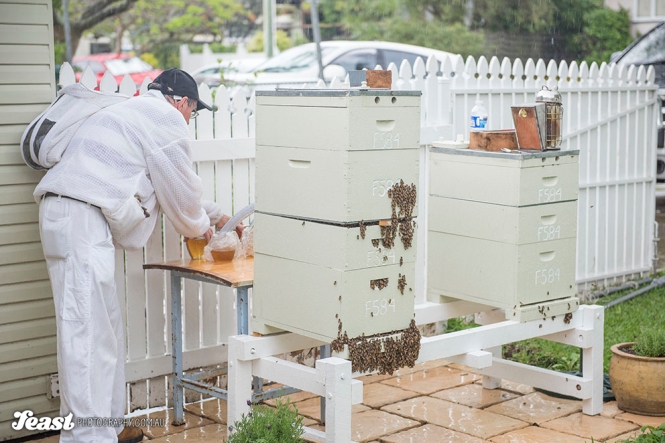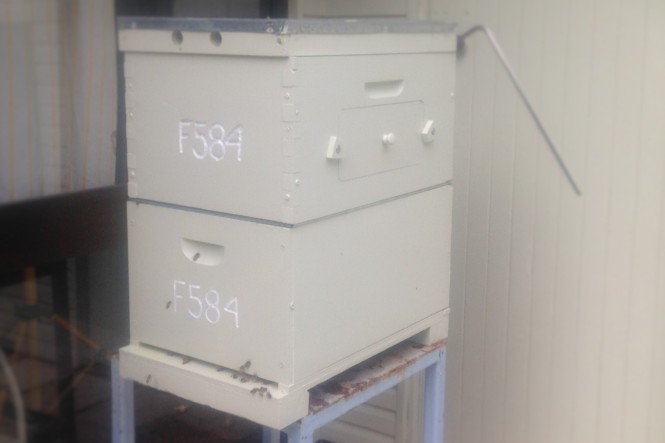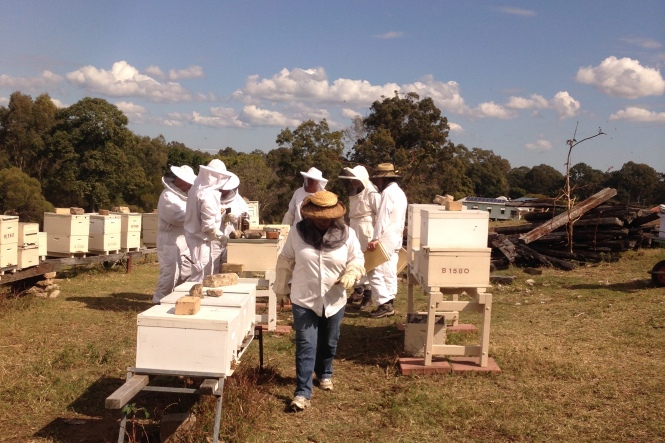Last weekend was a significant milestone for Virgin Honey – the first harvest from the Flow Hive frames in Madonna’s hive.
Shamus changing out Honey jars…in the pouring rain!
You see, when I first got my flow hive, I read my instructions for assembly and harvesting honey with great eagerness. However that was many moons ago (July I think) and I didn’t think to re-read the harvesting instructions again!
Fortunately for me, the bees and all involved, Nadine is an information sponge and we were soon able to rectify some of the more glaring issues. As you can see in the video below, we did lose a fair bit of honey in the process but certainly know now what not to do for next time.
The Flow Hive frames make harvesting honey fun and, when done correctly, very easy and stress free for the bees. People considering investing in Flow Hives still need to know all about bee management but the harvesting process is something you can get any novice involved in.
I think that the more people who know and care about the welfare of all bees, the better we our planet will be.
One of the wonderful benefits from being able to harvest this way, is the ability to get absolutely unadulterated honey which is what Virgin Honey is all about. It will take my bees visiting over 2 million flowers to gather just 450g of honey – a curious fact that never ceases to astound me! Honey will always contain a mix of nectars (unless your hive is in a mono-culture) but the Flow Hive allows you taste greater nuances since bees are fairly methodical in their storage of honey, you are likely to get a concentration of a particular flower’s nectar on a single frame.
Shamus with two jars from 2 different Flow Hive Frames. Notice the colour variation.
Flow Hive honey will be a little bit of a rarity as I presently have only 3 frames (versus 28 standard) but I look forward to sharing a few jars of it with you soon.
Big thanks to Nadine from Feast Photography for the video and photos on the day.













